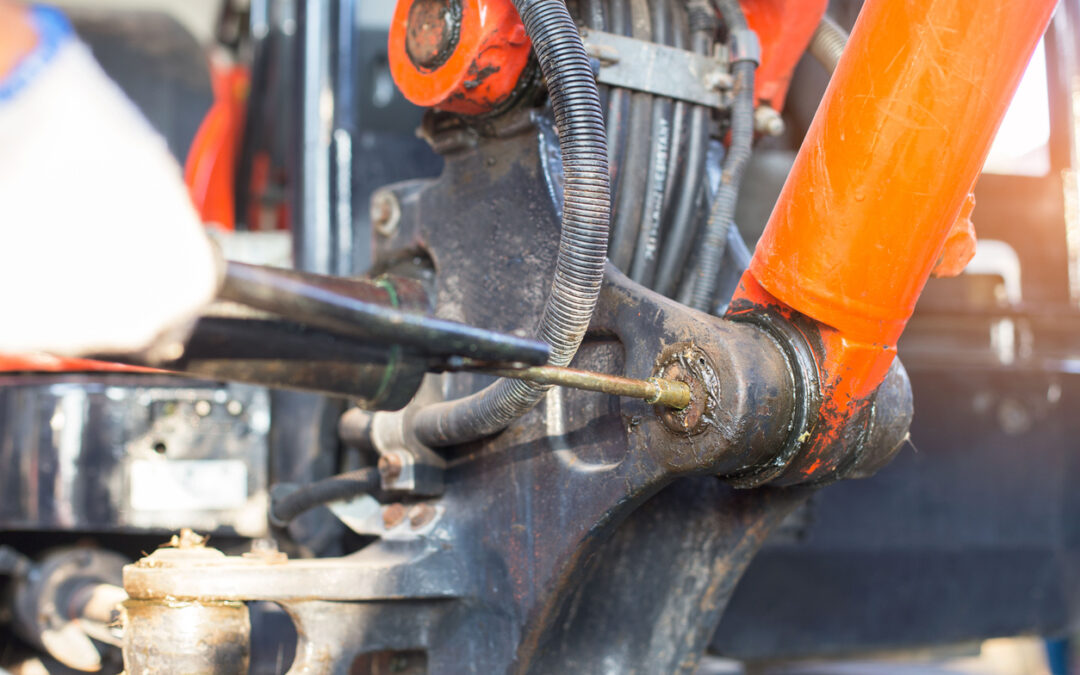Maximize Your ROI!
In today’s competitive business landscape, keeping your operations running smoothly is critical. Across various industries, from construction and agriculture to waste management, hydraulic systems play a vital role in powering essential equipment. When hydraulic equipment fails, the resulting downtime can be incredibly costly.
This blog post explores the high cost of hydraulic system downtime. It explains how a smart maintenance plan can greatly improve your return on investment (ROI).
The High Cost of Downtime
Imagine a halted construction project due to a malfunctioning excavator. Or an entire production line grinding to a stop because of a faulty hydraulic press. These scenarios highlight the significant financial impact of hydraulic system downtime. Here’s a breakdown of the costs to consider:
- Lost productivity: Every minute your hydraulic equipment is down translates to lost production output. This directly impacts your bottom line. For manufacturers, this can mean a significant loss in units produced per hour. In construction, downtime can lead to delays in project completion timelines and potential penalties.
- Labor costs: Idling employees while waiting for repairs to be completed on hydraulic equipment adds to the overall cost of downtime. Workers who cannot perform their regular duties due to equipment malfunction become unproductive. This leads to additional payroll expenses.
- Expedited repairs: The need for quick repairs to get your hydraulic systems back up and running often comes with a premium price tag. Expedited repair services typically cost more than scheduled maintenance, further adding to the financial burden of unplanned downtime.
- Customer dissatisfaction: Downtime can lead to delayed product or service deliveries, which can cause customer dissatisfaction. This can damage your reputation and potentially lead to lost business.
- Inventory carrying costs: In some cases, unplanned downtime can disrupt production schedules and lead to stockouts. To avoid these stockouts, businesses may be forced to carry additional inventory, increasing carrying costs.
Don’t let equipment downtime derail your operations. Preventative maintenance plans for hydraulic systems are a smart investment. Statistics show downtime costs can be staggering, reaching hundreds or thousands of dollars per hour.
Preventative Maintenance: A Smart Investment for Your Hydraulic Systems
Preventative maintenance involves a series of proactive steps to identify and address potential problems with your hydraulic systems. The goal is to catch these issues before they escalate into major breakdowns.
Here’s how a well-defined preventative maintenance plan can benefit your operations:
- Early detection of issues: Regular inspections, including visual checks for leaks and loose connections, and fluid analysis can help catch minor problems early, allowing for timely repairs and preventing catastrophic component failures.
- Reduced downtime: By proactively addressing potential issues through preventative maintenance, you minimize the risk of unexpected equipment failures that can bring your entire operation to a standstill. This translates to reduced downtime and increased productivity.
- Extended equipment lifespan: Preventative maintenance practices, such as following manufacturer recommendations for fluid changes and filter replacements, help to extend the lifespan of your hydraulic equipment, saving you money on premature replacements in the long run.
- Improved efficiency: Regular maintenance, including cleaning of components and proper system adjustments, can help your hydraulic systems operate at peak efficiency. This could lead to fuel savings for mobile equipment and optimized performance across your entire hydraulic-powered machinery.
Making Preventative Maintenance Work for Your Hydraulic Equipment
You must develop a well-defined preventative maintenance plan for your hydraulic systems. It is crucial to optimize performance, minimize downtime, and maximize the lifespan of your equipment. Here are some critical steps to consider to ensure a successful preventative maintenance program:
- Consult your equipment manufacturer’s recommendations: Refer to the user manuals for your specific hydraulic equipment model. These manuals typically contain the manufacturer’s suggested maintenance schedule and recommended procedures for preventative maintenance. This information is vital for ensuring your maintenance plan addresses the specific needs of your equipment and utilizes the correct parts and fluids.
- Develop a maintenance checklist: Create a detailed checklist that outlines the specific tasks to be performed during preventative maintenance. This checklist should include:
- Regular inspections: Schedule regular visual inspections of your hydraulic systems to identify potential problems early, such as leaks, loose connections, and signs of wear on components like hoses and cylinders.
- Fluid cleanliness and analysis: Regularly monitor the cleanliness of your hydraulic fluid through visual inspection and consider incorporating periodic fluid analysis. Fluid analysis can detect contamination, degradation, and potential component wear before major issues arise.
- Component wear inspection: During inspections, pay close attention to signs of wear on critical components such as pumps, valves, and actuators. Early detection of wear allows for timely replacement or repair, preventing catastrophic failures.
- Filter changes: Hydraulic system filters are crucial in removing contaminants from the fluid. Following the manufacturer’s recommended schedule for filter replacements is essential for maintaining optimal system cleanliness and performance.
- Schedule regular maintenance intervals: Establish a routine for preventative maintenance. Ensure these tasks are completed at the recommended frequency outlined in the manufacturer’s recommendations or your customized maintenance checklist. Having a consistent schedule helps prevent missed maintenance. It also ensures your hydraulic systems get the ongoing care they need.
Take Control of Your Hydraulic System Maintenance with Texas Hydrostatics
Keeping your hydraulic equipment running smoothly is vital to your business success. We at Texas Hydrostatics understand that. That’s why we offer a comprehensive preventative maintenance program designed specifically to meet your needs.
Why Choose Texas Hydrostatics?
Fast Turnaround Times
We know downtime is costly. That’s why we prioritize fast turnaround times, getting your equipment back up and running quickly. Our standard turnaround time is 7-10 working days, with expedited service options available.
Expert Technicians
Our team of highly skilled and experienced technicians is passionate about hydraulics. They possess in-depth knowledge of various hydraulic systems and stay up-to-date on the latest technologies, ensuring your equipment receives the best possible care.
Commitment to Quality
We use only OEM (Original Equipment Manufacturer) parts and premium fluids during maintenance. This maximizes your system’s performance and lifespan. Plus, we back our work with a one-year warranty for your peace of mind.
Preventative Maintenance Expertise
We go beyond basic maintenance. Our team can work with you to develop a customized preventative maintenance plan. It will address your specific equipment and operating conditions.
Ready to maximize your hydraulic equipment’s return on investment (ROI)? Contact Texas Hydrostatics today. We can help you develop a customized preventative maintenance plan to minimize downtime and keep your business running smoothly. We’ll answer your questions and ensure your hydraulic systems operate at peak performance.

